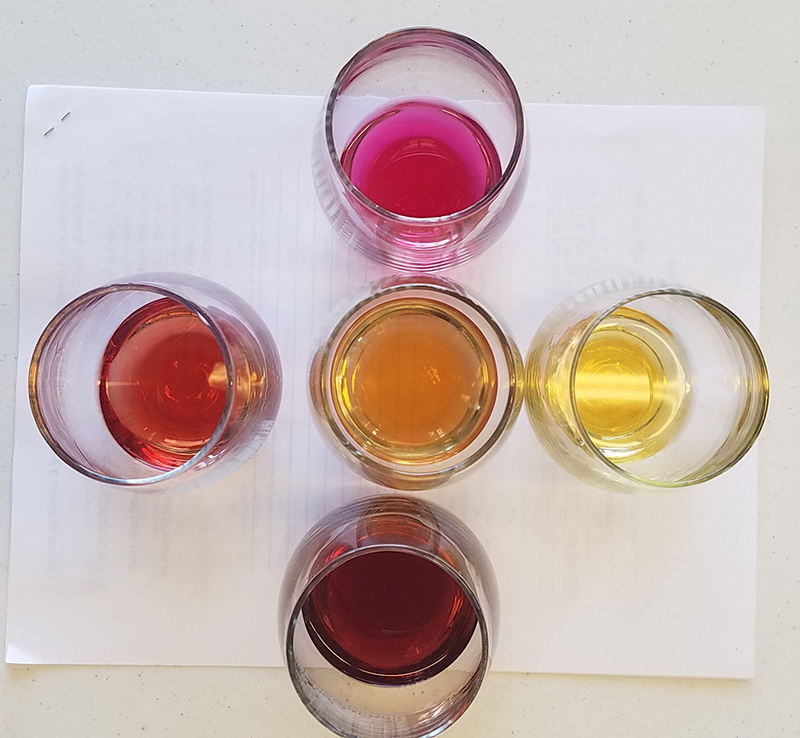BLIND WINE
TASTING AND JUDGING
Blind Taste is wine tasting and evaluation judgement in a controlled environment in which the tasters are kept unaware of the wines’ identities and the identity of the winemakers. The Emerging Winemakers Competition follows this practice. The blind tasting process is standard for wine professionals; wine tasters, sommeliers and experts who want to ensure impartial judgement of the quality of a wine during a wine competition. Blinded tastings are used to explore the objective parameters as they apply to the ability of wine drinkers, both wine professionals and ordinary consumers of wine. To identify and characterize the extraordinary variety of compounds that contribute to a wine’s appearance, aroma, palate and or its faults, each competitor’s wine is first reviewed by two judges and given evaluation notes and qualifications of ranking. Second round judging is reviewed by all the judges and the head judge’s evaluation is given prior to final selections of award and placement.
Appearance: The first step is to look at the wine against a white backdrop, like a blank piece of paper. This ensures that wines are not distorted by external colors. In addition to the color, there are various levels of intensity to gauge and judge / evaluate.
Aroma: First we don’t swirl we sniff to catch the primary aromas, those that come from the grape itself, then we swirl to smell the secondary aromas, those that are come from the fermentation process, then we taste, then we smell again to determine the tertiary aromas to determine the bouquet, those aromas that come from the aging process Here’s where it starts to get fun. First, we swirl. Swirling allows for increased oxygenation, which can bring out more complex secondary aromas. The first assessment is to determine if the wine is clean or faulty. Once we’ve determined a wine is free of faults, the next step is to gauge intensity. Intensity is usually measured and evaluated on a scale of low, medium or high.
Palate: The description of the palate, or what we taste, is by far the most in-depth category. A complete tasting note would include levels of sweetness, acid, tannin, alcohol, body and intensity. These are all graded from low, medium and high levels. Flavor characteristics and finish are factored in as well. With flavor, the wine is described in terms of primary attributes like fruit, floral, herbal or spice. Secondary characteristics include oak, earth, and flavors that result from production techniques like malolactic fermentation and lees contact. Don’t forget we taste for FAULTS.
This is what the judges see and only see for the Wine Competition.

Have a Question about Blind Wine Tasting and Judging?
If you have any questions about Blind Wine Tasting and Judging, please contact us.

